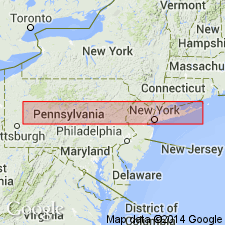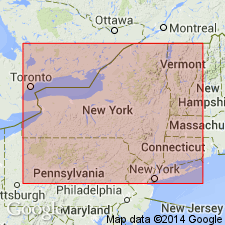
- Usage in publication:
-
- Bellmore Formation
- Modifications:
-
- Named
- Dominant lithology:
-
- Sand
- AAPG geologic province:
-
- Atlantic Coast basin
Summary:
Glacial outwash deposits in south-central Long Island, NY, are here named the Bellmore Formation. It consists of brown to yellow-brown, dense, cross-bedded sand and gravelly sand. Unconformably overlies the Wantagh Formation; forms the surficial sediment of much of south-central Long Island. Correlates with the Roslyn Drift of northern Long Island. Thickness at type section is 31.5 ft (9.6 m). Age is late Pleistocene (late Wisconsinan).
Source: GNU records (USGS DDS-6; Reston GNULEX).

- Usage in publication:
-
- Bellmore Formation
- Modifications:
-
- Age modified
- AAPG geologic province:
-
- Atlantic Coast basin
Summary:
Authors correlate the Harbor Hill Moraine with the Bellmore Formation, which overlies the Wantagh Formation. If the Wantagh proves to be Sangamonian, then the position of the Bellmore becomes early Wisconsinan.
Source: GNU records (USGS DDS-6; Reston GNULEX).
For more information, please contact Nancy Stamm, Geologic Names Committee Secretary.
Asterisk (*) indicates published by U.S. Geological Survey authors.
"No current usage" (†) implies that a name has been abandoned or has fallen into disuse. Former usage and, if known, replacement name given in parentheses ( ).
Slash (/) indicates name conflicts with nomenclatural guidelines (CSN, 1933; ACSN, 1961, 1970; NACSN, 1983, 2005, 2021). May be explained within brackets ([ ]).

